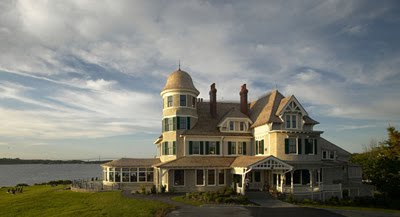
The Architecture of Happiness
What a welcome occurence when one finds a book in which, page after page, one’s own long held, though infrequently well-articulated, beliefs and feelings are validated. I have recently been immersed in such a book, head nodding affirmitively with each paragraph I read. The book is The Architecture of Happiness, by Alain de Botton. In it, Mr de Botton expertly articulates his belief that architecture, including design and decoration, can greatly influence the thoughts and feelings of people dwelling within. As someone whose moods are sensitive to my surroundings, I can now point to a wonderful reference on the subject. In one chapter, Mr. de Botton provides an illuminating example for his reader by sharing a personal experience of his own. Escaping a London shower one afternoon, he ducks into a McDonalds in which, surrounded by harsh lighting and plasticine interiors, he observes the behavior of the customers within. Later, he eloquently constrasts their behavior with that of those inside the cavernous, votive-lit Westminster Cathedral across the road, concluding that “the stonework threw into relief all that was compromised and dull, and kindled a yearning for one to live up to its perfections.”
I once stood inside the childhood bedroom of John Lennon at Mendips, his Liverpool home. Not grand, by any stretch of the definition, in fact it was tiny. But with its high ceilings and a gracious leaded glass bay window, it was a most magical room. I could easily picture the young Lennon as he lay on his twin sized bed looking out those beautiful casement windows at the stars, lost in his own imagination. Some thought had gone into the creation of this room. Some thought beyond mere function.
The British writer John Ruskin once said, “A good building must do two things. Firstly it must shelter us and secondly it must speak to us. And it must speak to us of all the things that are most important and that we need reminding of day to day.” Empirically speaking, our surroundings have great influence on our spirits. All this calls up weighty questions with conclusions that are likely far from objective. Questions such as “what is beauty?” and “how does the quality of our environment influence our happiness, our ennui, or our misery?” But I don’t believe these questions to be frivolous. I find them fascinating.
What a welcome occurence when one finds a book in which, page after page, one’s own long held, though infrequently well-articulated, beliefs and feelings are validated. I have recently been immersed in such a book, head nodding affirmitively with each paragraph I read. The book is The Architecture of Happiness, by Alain de Botton. In it, Mr de Botton expertly articulates his belief that architecture, including design and decoration, can greatly influence the thoughts and feelings of people dwelling within. As someone whose moods are sensitive to my surroundings, I can now point to a wonderful reference on the subject. In one chapter, Mr. de Botton provides an illuminating example for his reader by sharing a personal experience of his own. Escaping a London shower one afternoon, he ducks into a McDonalds in which, surrounded by harsh lighting and plasticine interiors, he observes the behavior of the customers within. Later, he eloquently constrasts their behavior with that of those inside the cavernous, votive-lit Westminster Cathedral across the road, concluding that “the stonework threw into relief all that was compromised and dull, and kindled a yearning for one to live up to its perfections.”
I once stood inside the childhood bedroom of John Lennon at Mendips, his Liverpool home. Not grand, by any stretch of the definition, in fact it was tiny. But with its high ceilings and a gracious leaded glass bay window, it was a most magical room. I could easily picture the young Lennon as he lay on his twin sized bed looking out those beautiful casement windows at the stars, lost in his own imagination. Some thought had gone into the creation of this room. Some thought beyond mere function.
The British writer John Ruskin once said, “A good building must do two things. Firstly it must shelter us and secondly it must speak to us. And it must speak to us of all the things that are most important and that we need reminding of day to day.” Empirically speaking, our surroundings have great influence on our spirits. All this calls up weighty questions with conclusions that are likely far from objective. Questions such as “what is beauty?” and “how does the quality of our environment influence our happiness, our ennui, or our misery?” But I don’t believe these questions to be frivolous. I find them fascinating.
















































